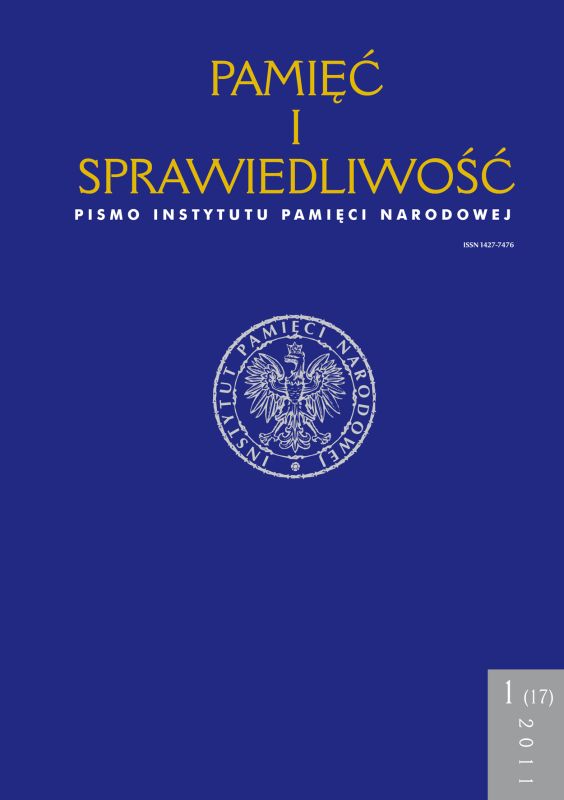Polskie graffiti lat osiemdziesiątych w świetle relacji jego twórców
Pamięć i Sprawiedliwość, Tom 17 Nr 1 (2011), strony: 211-230
Data publikacji: 2011-06-30
Abstrakt
A new form of graffiti appeared in Poland in the mid 1980s. It was created as a combination of a graphic form and written text. First, the technique to be used was a stencil and a roller, and later – a spray paint on a stencil. When stencil graffiti came into use in Poland for the first time, Polish society was suffering from apathy after martial law. Fortunately this type of seditious activity was no
longer acknowledged as to be punished for. Stencil graffiti was a clear manifestation of the youth’s dissatisfaction with the harsh reality of the Communism, which censored freedom of thought and restricted any action against the grim, boring day-to-day life and the official culture. What is more, stencil graffiti was a typical Polish phenomenon, radically different form western tags and murals of those days. It usually depicted various motifs associated with the activity of the youth’s alternative opposition such as: Freedom and Peace Movement (Ruch Wolność i Pokój), Movement of Alternative Society (Ruch Społeczeństwa
Alternatywnego) and Orange Alternative (Pomarańczowa Alternatywa) whose absurd sense of humour gave Polish graffiti characteristic style. Great majority of the stencils were devoted to the issue of anty-military opposition’s attitude, ecology and politics – mainly by showing images of the Communist leaders (Lenin, Stalin, General Jaruzelski) in a humorous and perverse way. Some of them were depicting PZPR (Polska Zjednoczona Partia Robotnicza, Polish United Workers’ Party), ZOMO (Zmotoryzowane Oddziały Milicji Obywatelskiej, Motorised
Reserves of Citizens’ Militia) and MO (Milicja Obywatelska, Citizens’ Militia) activity. Warsaw’s first stencil graffiti artist was Tomasz Sikorski, in Krakow – Jacek Jankowski “Ponton”. Their first paintings appeared on the walls in 1985, whereas in 1986 nearly every wall in Poland was covered with graffiti. This process
almost extinguished in the early 1990s. Among the most popular Polish graffiti artists there were: Aleksander Rostocki “Olo”, Olgierd Bocheński “Skaman”, Grzegorz Kmita “Patyczak”, Krzysztof Kraśnik “ZBOWID”, Krzysztof Raczyński, Andrzej Miastkowski “Egon Fietke”, Sławomir Macias “Słoń”, Adam Jakubowski “Becon”, Dariusz Paczkowski and Wojciech Koroonkiewicz all of whose memoirs provided a firm foundation for this article and many others. The activities of the Lodz “Leeeżeć” Community which was founded in 1989 and of the Wroclaw LUXUS group are also worth mentioning. During LUXUS’ exhibitions it was possible to take part in workshops of cutting out shapes and designs for new stencils. Both groups were well known for their graffiti of the very artistic character.
 Język Polski
Język Polski
 English
English
 Deutsch
Deutsch
 Français (France)
Français (France)
 Italiano
Italiano
 Русский
Русский


 PDF
PDF
